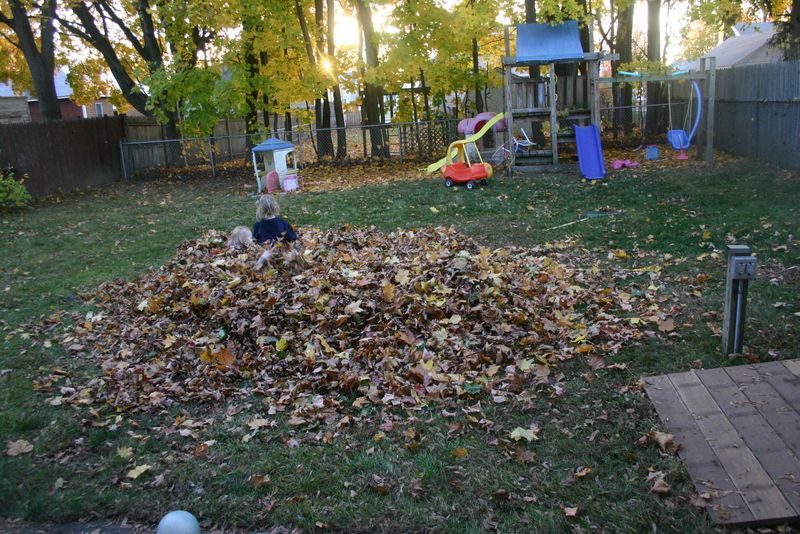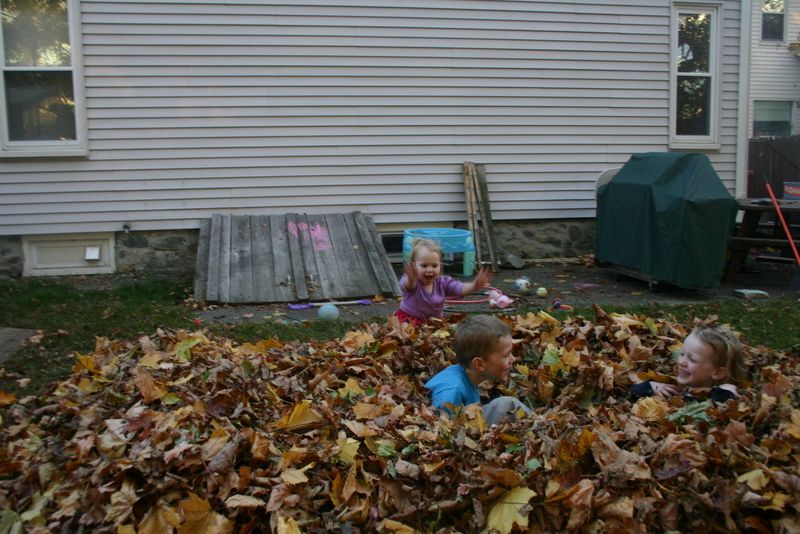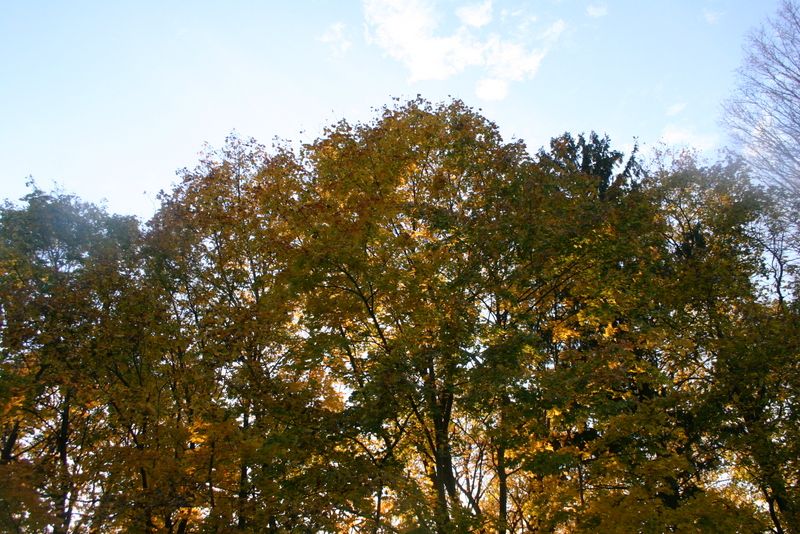Ann Marie and I went to Costco today. I got there when it opened, so I had a pretty decent parking spot nice and close to the cart return. After we were done and I had loaded all of the things into the car, I saw a minivan waiting for my parking spot, blinker fully engaged. She sat there while I shut the trunk and walked the cart back to the cart return. There were plenty of other spots free, so I don't see why she didn't just park in one of them. Why is it people are willing to spend extra time waiting in the car in order to save time walking? It's like the people who show up forty-five minutes early for school pickup. Yes, they get a spot close to the door which makes for a quicker getaway, but I get there ten minutes early and I drive away only about five minutes after the early people, so the total time I spend waiting around the school is only fifteen minutes and they wait forty-five. How does that make any sense?
But this minivan lady must have thought it would be worthwhile to wait; after all, all I had to do was return the cart, buckle the baby into her car seat, get in and drive away. How long can that possibly take? What she failed to consider, however, was that buckling the baby into her car seat takes at least five minutes, and that's when she is being cooperative. When she is not cooperating, it takes approximately 400 years. Getting into the car is one of the times where I hear a lot of "DO SELF!" but do not see a lot of self-doing. Other areas where "DO SELF" is unwelcome: Pouring milk from the full glass quart container, putting shoes on when we have places to be, and changing dirty diapers. She is most definitely not allowed to "DO SELF" her own poopy diapers.
But the car. The car is where I am most likely to lose my mind as I stand in the weather, waiting for her highness to stop pushing buttons and deign to turn around and sit down. Every time I must weigh whether it will be faster to let her DO SELF or to force her and endure her stiff-bodied wrath. If it were just regular old screamy wrath I'd endure it no problem, but she's a lot stronger than you might think and it can be pretty challenging to force her into a car-seat-amenable body shape if she doesn't want to comply. So I usually give her a few minutes.
But the lady in the minivan has apparently never tried to put an independent toddler into a car seat before. To her, it looked like I returned the cart and then went back to my car in order to stand there with the door open for no reason whatsoever. "What is she DOING?" she must have been thinking. "Doesn't she SEE ME HERE?"
Yes. Yes I did see her there. I thought she was probably going to be unhappy with how long it took me to get into the car. I would maybe even have felt some slight pressure to try to hurry Ann Marie along, except that there were about fifteen other parking spots within my sight line. None of them were closer to the entrance, but at least one was only fifteen feet further away. And that one was closer to the cart return.
And yet she waited. After what must have seemed an interminable length of time where I just stood at the car, waiting in the cold just for fun, she pulled forward and looked at me with an expression that said, "WHAT THE HELL ARE YOU DOING?" I said, "It's going to be a long time," and shrugged. I don't know if she could read my lips or not, but she drove away and the vibe I received was very annoyed. Meanwhile, I was saying "Turn around and sit. Turn around and sit. I will give you the juice box when you are buckled. Turn and sit. Turn and sit. Sit. Sit down. Sit. Sit. Sit. Sitsitsitsitsitsitsit," because that is how I spend 15% of my overall time. And it's not even that I drive that often, it's that it takes Ann Marie so long to get in the car.
So, no, lady who didn't want to park fifteen feet further from the entrance. I have no sympathy for you whatsoever.
Thursday, November 21, 2013
Wednesday, November 6, 2013
The cons of autumn
I love fall. Fall in New England makes February worth it. I especially love fall in the city where I now live. There seem to be just so many more types of trees around here compared to where I grew up, and so many of them are huge. The house next door to us has a simply enormous oak tree and two gigantic maples in their yard. Every year, they turn the most glorious colors, and when the afternoon sunlight angles in and hits them just right, they glow.
So. Huge, beautiful trees turning gorgeous colors: Pro.
But do you know what happens to the leaves after they're done glowing on the trees in the afternoons? They fall off the trees. Into your yard. And have to be picked up.



Do you see the size of that leaf pile? Nora is standing up in that middle picture. In the top picture, Ann Marie actually got stuck in the pile as if it were leaf quicksand. And that's not even all the leaves in the yard! I didn't bother with the part in front of the side door or the section around and behind the swing set. Why not rake all of it and be done, you ask? In response, I present the trees directly above our yard:

That's a lot of leaves up there. And over the past eight years we have learned that these trees shed their leaves last.
Actually, the past eight years have given me the chance to make some observations of the natural world. First, walnut trees turn yellow and lose their leaves in September when Norway maples are still lush and green; Norway maples turn last. Second, the first leaves to turn are the ones that get the most sun. This is a particularly nice effect because of the afternoon sunlight angling in and making them glow, as I mentioned. Third, trees in a clump turn colors starting from the outside in. My theory here is that the inner trees are kept warm by their neighbors and thus get the temperature signal to go dormant only after their neighbors have shed their leaves, but the takeaway message is that in a copse of Norway maples, the ones in the middle lose their leaves dead last.
These?

The middle trees in a copse of Norway maples. So yeah, we've got several weeks to go. We will be raking up those leaves in late November, when it is really really cold and there will be a distinct lack of joyful jumping into the leaves. There will instead be a lot of grumbling about cold hands.
Late November freezing cold raking of leaves: Con.
Ah, well, I still think the pros outweigh the cons.

So. Huge, beautiful trees turning gorgeous colors: Pro.
But do you know what happens to the leaves after they're done glowing on the trees in the afternoons? They fall off the trees. Into your yard. And have to be picked up.



Do you see the size of that leaf pile? Nora is standing up in that middle picture. In the top picture, Ann Marie actually got stuck in the pile as if it were leaf quicksand. And that's not even all the leaves in the yard! I didn't bother with the part in front of the side door or the section around and behind the swing set. Why not rake all of it and be done, you ask? In response, I present the trees directly above our yard:

That's a lot of leaves up there. And over the past eight years we have learned that these trees shed their leaves last.
Actually, the past eight years have given me the chance to make some observations of the natural world. First, walnut trees turn yellow and lose their leaves in September when Norway maples are still lush and green; Norway maples turn last. Second, the first leaves to turn are the ones that get the most sun. This is a particularly nice effect because of the afternoon sunlight angling in and making them glow, as I mentioned. Third, trees in a clump turn colors starting from the outside in. My theory here is that the inner trees are kept warm by their neighbors and thus get the temperature signal to go dormant only after their neighbors have shed their leaves, but the takeaway message is that in a copse of Norway maples, the ones in the middle lose their leaves dead last.
These?

The middle trees in a copse of Norway maples. So yeah, we've got several weeks to go. We will be raking up those leaves in late November, when it is really really cold and there will be a distinct lack of joyful jumping into the leaves. There will instead be a lot of grumbling about cold hands.
Late November freezing cold raking of leaves: Con.
Ah, well, I still think the pros outweigh the cons.

Sunday, November 3, 2013
A time and place for paper towels
Temerity Jane just wrote a 150,000 word post on paper towels and how she won't buy them and has instead bought unpaper towels. In case you don't have the kind of time it takes to read 150,000 words on paper towels*, let me recap it for you here: Kelly doesn't like to spend money on things like paper towels which are used only once. She tried to use dishcloths, but they did not fulfill her paper towel needs. So she bought some handmade "unpaper towels" which are basically a specialized dishcloth that have the right thickness to stand in for a paper towel. There, Kelly. That only took 55 words.
Now I am ALL FOR the end of paper towel purchases. I am fully on board. I stopped buying them myself, under the premise that if I don’t have them, I can’t use them. I have found that dishcloths and dish towels do work pretty well for our paper towel needs, but I have to admit I am intrigued by this unpaper towel product and may buy some to try out.
But all that being said, there is a time and a place for paper towels, and that place is your kitchen and the time is immediately after an entire glass quart full of milk is dropped on the floor and shatters.
You see, we buy our milk in glass quarts from the local dairy. We do this because I like to support local businesses, and because I like reusing things whenever possible, and because the purchasing of reusable glass bottles of local milk gives me a pleasant smug feeling. There are two major downsides to this system. First, the glass bottles only come in quarts, so a week’s worth of milk takes up an inordinate amount of space in our refrigerator. Second, when a glass quart of milk is dropped on the floor, you get milky shard of glass everywhere. Just everywhere.
The first time this happened, I had recently climbed on the “no paper towels” train, so I grabbed a bunch of dish towels – including the pack of brand new dish towels that I had purchased that very day because when your kitchen is covered in spreading puddle of glassy milk you grab whatever is most handy- to sop up the milk. And it worked fabulously. The towels were absorbent enough to get all the milk and thick enough to protect my hands from the glass splinters.
But then I had a pile of milk-soaked towels, studded with shards of glass. “I’ll just put these in the washing machine immediately so they don’t fill the kitchen with the smell of sour milk,” I thought, and dropped them in. “I’m sure the washing machine will also get all the glass out.”
Did you spot the flaw in this plan? The good news is that I also spotted the flaw just as my hand was about to press the start button, and I did not run a bunch of broken glass through my washing machine. So that’s something. So then I decided to dump the glassy towels on the porch to dry in the sun with the plan of shaking the glass off the towels once everything was dry.
Did you find the second flaw? But fortunately, a few days later my brain clicked on mere moments before I shook a million glass splinters all over the porch my kids sometimes walk on barefoot. Unfortunately, that left me with a pile of glass-splintery, sour-milk dish towels - three of which were brand new – and no idea what to do with them.
I threw them out. Much like I would have thrown out paper towels, but far more expensively and probably with a bigger environmental impact.
So now I try to keep at least one roll of paper towels around. For milk emergencies.
*You should though, because Kelly’s version is much, much funnier.
Now I am ALL FOR the end of paper towel purchases. I am fully on board. I stopped buying them myself, under the premise that if I don’t have them, I can’t use them. I have found that dishcloths and dish towels do work pretty well for our paper towel needs, but I have to admit I am intrigued by this unpaper towel product and may buy some to try out.
But all that being said, there is a time and a place for paper towels, and that place is your kitchen and the time is immediately after an entire glass quart full of milk is dropped on the floor and shatters.
You see, we buy our milk in glass quarts from the local dairy. We do this because I like to support local businesses, and because I like reusing things whenever possible, and because the purchasing of reusable glass bottles of local milk gives me a pleasant smug feeling. There are two major downsides to this system. First, the glass bottles only come in quarts, so a week’s worth of milk takes up an inordinate amount of space in our refrigerator. Second, when a glass quart of milk is dropped on the floor, you get milky shard of glass everywhere. Just everywhere.
The first time this happened, I had recently climbed on the “no paper towels” train, so I grabbed a bunch of dish towels – including the pack of brand new dish towels that I had purchased that very day because when your kitchen is covered in spreading puddle of glassy milk you grab whatever is most handy- to sop up the milk. And it worked fabulously. The towels were absorbent enough to get all the milk and thick enough to protect my hands from the glass splinters.
But then I had a pile of milk-soaked towels, studded with shards of glass. “I’ll just put these in the washing machine immediately so they don’t fill the kitchen with the smell of sour milk,” I thought, and dropped them in. “I’m sure the washing machine will also get all the glass out.”
Did you spot the flaw in this plan? The good news is that I also spotted the flaw just as my hand was about to press the start button, and I did not run a bunch of broken glass through my washing machine. So that’s something. So then I decided to dump the glassy towels on the porch to dry in the sun with the plan of shaking the glass off the towels once everything was dry.
Did you find the second flaw? But fortunately, a few days later my brain clicked on mere moments before I shook a million glass splinters all over the porch my kids sometimes walk on barefoot. Unfortunately, that left me with a pile of glass-splintery, sour-milk dish towels - three of which were brand new – and no idea what to do with them.
I threw them out. Much like I would have thrown out paper towels, but far more expensively and probably with a bigger environmental impact.
So now I try to keep at least one roll of paper towels around. For milk emergencies.
*You should though, because Kelly’s version is much, much funnier.
Subscribe to:
Posts (Atom)